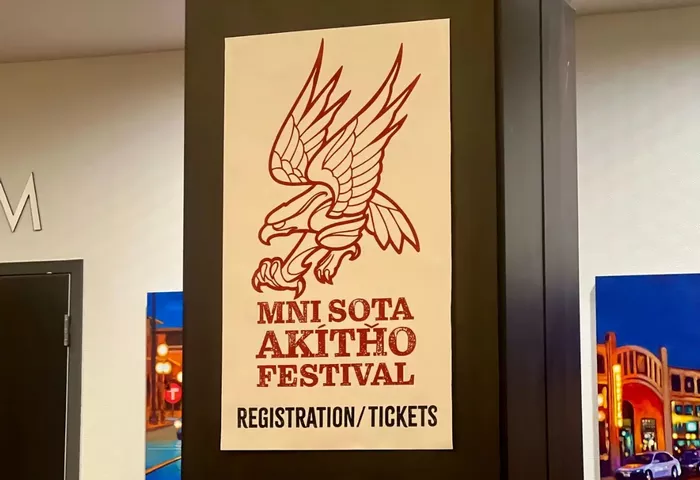Tattoo machines and materials fill the tables on the first floor of the InterContinental Saint Paul Riverfront Hotel, while a stage is set up in the ballroom above.
The term “Akitho” is the modern Lakota word for “tattoo,” as explained by multidisciplinary Lakota artist Willard Malebear Jr.
The Mni Sota Akitho Festival, taking place in downtown St. Paul this weekend, is a one-of-a-kind event uniting both Indigenous and non-Indigenous tattoo artists, musicians, and cultural educators. It offers a rich mix of tattoos, performances, and cultural learning.
Malebear, a Standing Rock Lakota and owner of Iktomi Tattoo in south Minneapolis, opened his studio a few years after being released from prison. His journey to this point was made possible by finding a healthy environment. Today, Iktomi Tattoo provides a space for other artists to refine their craft.
Malebear’s own tattoo work features a variety of styles, from florals to portraits. He says he’s open to tattooing anything.
The idea for a tattoo festival that highlights culture, as opposed to the more typical tattoo festivals in the area, came from Malebear and his fellow artists at Iktomi.
“For a Lakota man in sobriety, sometimes there’s just some stuff that doesn’t align with me or my culture,” Malebear said. He emphasized that the festival was created with sobriety in mind.
In addition to the tattooing, the festival also provides opportunities for community members to engage with Indigenous culture and wellness. Activities include an Ojibwe-style moccasin game and crafting Dakota corn husk dolls.
“We just kind of saw an opportunity to go for it. And it was just like, let’s try it. Let’s see what happens,” Malebear reflected.
Nipinet Landsem, an Ojibwe tattoo artist and illustrator from Minneapolis, also expressed that feeling. Landsem, one of the original artists who helped form the idea of the festival, will be at the event tattooing and sharing cultural insights. Though they no longer work at Iktomi, they remain a part of the festival’s origins.
One of Landsem’s specialties is azhaasowinan, or ceremonial and medicinal tattoos.
“It’s like a revitalization at the moment. We have a lot of facial tattoos, chin lines, or tattoos by the eyes,” Landsem explained.
As a member of the Turtle Mountain Band of Chippewa Indians in North Dakota, Landsem is excited to reconnect with and participate in their cultural tattooing traditions.
“Modern Indigenous people are now getting the same tattoos that our ancestors did, representing clans, helpers, and honoring accomplishments,” they shared. “Our ancestors did this too—they just didn’t use a machine.”
Stella Standingbear, a Lakota hip-hop and pop artist, was invited to perform at the festival. She believes music is a powerful tool for bringing people together and aiding in healing, and she wanted to contribute to that mission at the festival.
Standingbear, who has approximately 35 tattoos, views them as personal memories.
“Tattoos are like a memory. If there’s a milestone or something eventful in my life, I like to get a tattoo to remember that moment. It kind of just shows who you are,” she said.
One of her tattoos is of the Oglala Sioux Tribe flag, representing her South Dakota roots. The flag features a red background with a blue border and nine stylized tipis. Standingbear explained that she wanted to carry her tribe with her wherever she goes.
Landsem enjoys bringing these personal and cultural meanings to life through tattooing.
“I’m really interested in tapping into what makes my clients want to get a tattoo, what they find important, and what they want to communicate,” Landsem said.
Malebear envisions the Mni Sota Akitho Festival growing in future years, and even expanding to other parts of the Midwest. His goal is to create a festival that is a safe and inclusive space for all.
“We’re doing our best to curate something that supports everyone, but most importantly, a celebration of culture,” Malebear said.
Related Topics

